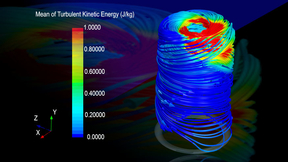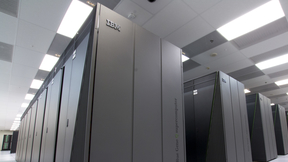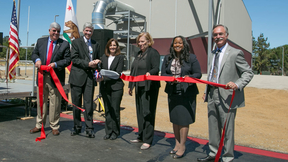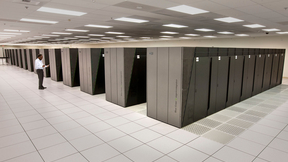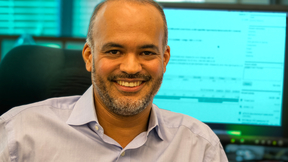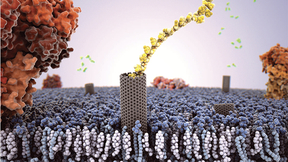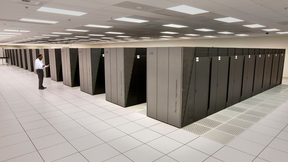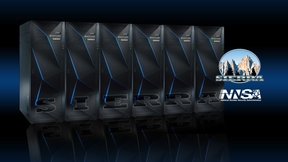Back
LIVERMORE, Calif. – The U.S. Department of Energy’s (DOE) High Performance Computing for Manufacturing program, designed to spur the use of national lab supercomputing resources and expertise to advance innovation in energy efficient manufacturing, is seeking a new round of proposals from industry to compete for $3 million. The High Performance Computing for Manufacturing …
A U.S. Department of Energy (DOE) program designed to spur the use of high performance supercomputers to advance U.S. manufacturing has funded 13 new industry projects for a total of $3.8 million. The High Performance Computing for Manufacturing (HPC4Mfg) Program creates an ecosystem that allows experts at DOE’s national laboratories to work directly with manufacturing…
Researchers from the RAND Corporation and Lawrence Livermore National Laboratory (LLNL) have joined forces to combine high-performance computing with innovative public policy analysis to improve planning for particularly complex issues such as such as water resource management. Building on previous work conducted by RAND on the Colorado River Basin in 2012, RAND and the…
The Department of Energy announced Tuesday that it will invest $16 million over the next four years to accelerate the design of new materials through the use of supercomputers. Two four-year projects will take advantage of superfast computers at DOE national laboratories by developing software to design fundamentally new functional materials destined to revolutionize…
Students in the Cyber Defenders class of 2016 put the breadth of what they’ve learned to the test in what is now called the "Monarch of the Hill" team competition, an intensive three days of real-worldcyber security challenges. "The competition allows students to apply what they’ve learned in classes, seminars and workshops," said Celeste Matarazzo of Computation’s Center…
Lawrence Fellow Aurora Pribram-Jones is one of two recipients of the Howes Scholar award presented by the Department of Energy Computational Science Graduate Fellowship (DOE CSGF) Program at its annual program review. The award, presented Tuesday (July 26), was established to honor Fredrick Anthony Howes, who managed the DOE Applied Mathematical Science Program during the…
Cybersecurity experts Jamie Van Randwyk of Lawrence Livermore National Laboratory (LLNL) and Sean Peisert of Lawrence Berkeley National Laboratory (Berkeley Lab) are leading a new program to develop new data analysis methods to better protect the nation’s power grid. The project, "Threat Detection and Response with Data Analytics," is part of a $220 million, three-year…
Officials from the Department of Energy’s National Nuclear Security Administration (NNSA) and government representatives today dedicated a new supercomputing facility at Lawrence Livermore National Laboratory (LLNL). The $9.8 million modular and sustainable facility provides the Laboratory flexibility to accommodate future advances in computer technology and meet a rapidly…
DOE laboratories, including LLNL, home to four of the top 10 most powerful supercomputers The latest Top500 list of the world’s most powerful supercomputers is dominated by China. The new edition of the list was released Monday at the International Supercomputing Conference (ISC16) in Frankfurt, Germany. China now has the two top-ranked systems on the list and, for the…
Opportunities for students to garner experience from leaders in their fields are few and far between, but Brigham Young University (BYU) and Lawrence Livermore have created one such collaboration.Through a program established this year with the help of Livermore’s Benjy Grover, computer science students in BYU’s undergraduate big data science capstone course connect with…
In honor of Asian Pacific American Heritage Month, the Asian Pacific American Council (APAC) and the Office of Strategic Diversity and Inclusion Programs at Lawrence Livermore National Laboratory (LLNL) are spotlighting a few employees of Asian heritage, focusing on educational background, work at the Lab and volunteer efforts. This profile features two computer scientists…
Lawrence Livermore National Laboratory's Office of the Chief Information Officer and Livermore Information Technology (LivIT) hosted 78 students and teachers Wednesday for the fourth annual Information Technology (IT) Job Shadow Day. Students and teachers from Amador, Dougherty, Dublin, Granada, Livermore, Livermore Charter School, Mountain House, Tracy and St. Mary’s in…
Chip-architecture breakthrough accelerates path to exascale computing; helps computers tackle complex, cognitive tasks such as pattern recognition sensory processing LIVERMORE, Calif. and ARMONK, N. Y. – Lawrence Livermore National Laboratory (LLNL) today announced it will receive a first-of-a-kind brain-inspired supercomputing platform for deep learning developed by IBM…
A Lab bioinformatics scientist has been selected to serve on a U.S. National Academies of Sciences, Engineering and Medicine panel that will study microbiomes in "built environments."Jonathan Allen, a researcher in Lawrence Livermore's Global Security Program, has been chosen to be part of the 15-member committee that will study microbiomes, or microbial communities of…
LIVERMORE, Calif – A new U.S. Department of Energy (DOE) program designed to spur the use of high performance supercomputers to advance U.S. manufacturing is now seeking a second round of proposals from industry to compete for approximately $3 million in new funding.The High Performance Computing for Manufacturing (HPC4Mfg) Program currently supports 15 projects partnering…
A simulation for drug-membrane permeability developed at LLNL increases the development speed for nerve-agent treatmentsImagine you wanted to know how much energy it took to bike up a mountain, but couldn’t finish the ride to the peak yourself. So, to get the total energy required, you and a team of friends strap energy meters to your bikes and ride the route in a relay,…
Lawrence Livermore National Laboratory and partners announce 10 new industry projects to advance manufacturing using high performance computing under a DOE programIndustry projects ranging from improved turbine blades for aircraft engines and reduced heat loss in electronics to waste reduction in paper manufacturing and improved fiberglass production are among the first to…
High performance computing (HPC) simulations exploring star formation by Lawrence Livermore astrophysicist Richard Klein were among select research highlights featured by NASA at the recent supercomputing conference in Austin, Texas.Klein’s "Simulating Star Formation: From Giant Molecular Clouds to Protostellar Clusters" presentation is now on NASA’s website.The origin of…
The full power of Lawrence Llivermore’s Sequoia supercomputer played a key role in the Earth mantle convection simulation by a University of Texas-led team that won the 2015 Gordon Bell Prize, announced at this year’s Supercomputing Conference (SC15).The team’s peak performance results were achieved on the full Sequoia system last summer, and the weak and strong scaling…
The collaboration of Oak Ridge, Argonne and Lawrence Livermore (CORAL) that will bring the Sierra supercomputer to the Lab in 2018 has been recognized by HPCWire with an Editor’s Choice Award for Best HPC Collaboration between Government and Industry.The award was received by Doug Wade, head of the Advanced Simulation and Computing (ASC) program, in the DOE booth at…

